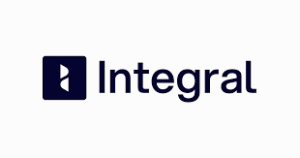Protecting Client Data: Essential Cybersecurity Tips for Accounting Practices

Ransomware attacks on accounting firms can be devastating. When client tax records and payroll data are encrypted, firms face impossible choices: pay ransoms, lose clients, or both. These real-world scenarios underscore why protecting client data must be every accounting firm’s top priority.
Accounting firms handle some of the most sensitive financial and personal information for individuals and businesses, making them prime targets for cybercriminals. Recent studies highlight the scale of the threat: in 2024, 43% of UK businesses reported experiencing a cyberattack or data breach, with the financial sector among the most targeted. The average cost of a breach in financial services is estimated at $6.08 million, significantly above the global average of $4.88 million. Phishing remains the most common attack vector, followed by ransomware and credential theft.
Small and mid-sized practices are particularly vulnerable. Hackers often exploit human error, weak passwords, and outdated software rather than deploying highly sophisticated tools. Many attackers specifically target smaller firms because they assume these organizations lack the resources and expertise to implement enterprise-level security measures. Firms that fail to implement robust cybersecurity measures risk substantial fines, regulatory scrutiny, and client loss. Moreover, the interconnected nature of modern accounting systems means that a single breach can cascade across multiple client accounts, amplifying the damage exponentially.
Step 1: Conduct a Comprehensive Risk Assessment
Why it matters: Identifying vulnerabilities is the foundation of effective cybersecurity and protecting client data.
What to do: Begin by mapping all potential entry points for cyberattacks, including outdated software, unsecured networks, and personal devices used for work. Consider both external threats, such as phishing campaigns, ransomware, and social engineering attacks, and internal risks like accidental data exposure or poor access controls. Engage cybersecurity professionals to conduct penetration testing and vulnerability scans that reveal hidden weaknesses in your systems. Prioritize risks based on severity and likelihood, and review your assessment at least annually or whenever significant operational changes occur. Document your findings thoroughly and share relevant information with key stakeholders to ensure organization-wide awareness. A comprehensive assessment provides a clear roadmap for targeted investments in cybersecurity, ensuring resources are allocated where they are most needed.
Step 2: Implement Strong Authentication Measures
Why it matters: Weak or reused credentials are one of the easiest ways for attackers to gain unauthorized access.
What to do: Enforce multi-factor authentication (MFA) across all systems, requiring employees to provide two or more verification forms. Tools like Microsoft Authenticator or Duo Security offer robust MFA solutions specifically designed for professional services. Implement strong password policies with complex combinations, periodic changes, and a prohibition on reuse across platforms. Use secure password managers such as 1Password to safely store credentials and generate random, complex passwords for each account. Limit access privileges according to role necessity, ensuring sensitive client data is only accessible to those who need it. Regularly audit user permissions to identify and remove unnecessary access rights, particularly for former employees or contractors. Research shows MFA can reduce the likelihood of unauthorized access by over 99%, making it a cornerstone of any firm’s strategy for protecting client data.
Step 3: Encrypt Sensitive Information
Why it matters: Encryption ensures that intercepted or stolen data is unreadable to unauthorized parties, providing essential protection when other defenses fail.
What to do: Encrypt all sensitive client information both in storage and in transit. This includes emails, cloud storage, local servers, and backups. Solutions like VeraCrypt offer reliable, free encryption for files and drives. Update encryption protocols regularly to meet current security standards and ensure compatibility with industry best practices. In addition, ensure that backups are stored securely, ideally with an offline copy to protect against ransomware attacks. Implement full-disk encryption on all devices that access client data, including laptops and mobile devices. When combined with controlled access and network segmentation, encryption forms a crucial layer of defense in protecting client data and mitigating the impact of a potential breach.
Step 4: Train Staff Regularly on Cybersecurity Threats
Why it matters: Human error remains a leading cause of breaches. A 2023 Verizon report found that 74% of breaches involved a human element, such as falling for phishing emails or misconfiguring systems.
What to do: Conduct ongoing training to help staff identify suspicious emails, fraudulent requests, and social engineering attempts. Use a combination of online modules, in-person sessions, and simulated phishing exercises to reinforce awareness. Create clear reporting pathways so employees can escalate potential threats quickly without fear of repercussions. Foster a security-conscious culture where cybersecurity is everyone’s responsibility, not just the IT department’s concern. Provide regular updates on emerging threats and tactics used by cybercriminals, ensuring your team stays informed about the evolving threat landscape. A well-trained workforce is a critical frontline defense, preventing many breaches before technical safeguards are even tested.
Step 5: Establish Incident Response and Business Continuity Plans
Why it matters: Even the most secure firms cannot eliminate risk entirely. Rapid, structured response reduces damage and downtime while maintaining client trust.
What to do: Develop a formal incident response plan that outlines how to contain, remediate, and report breaches. Under GDPR and ICO guidelines, UK firms must report certain data breaches within 72 hours, making preparedness essential. Include client notification procedures and regulatory reporting obligations to ensure compliance with data protection regulations. Complement this with a business continuity plan that allows operations to continue while systems are restored. Identify critical systems and establish recovery time objectives for each. Regularly test both plans through tabletop exercises and full-scale simulations to ensure effectiveness and identify areas for improvement. Firms that respond quickly and transparently to incidents maintain client confidence and reduce reputational damage.
Communicate Your Security Commitment to Clients
Protecting client data is not just a defensive measure but also a competitive advantage. Clients increasingly ask potential accounting firms about their cybersecurity practices before signing engagement letters. Create a one-page security summary highlighting your MFA implementation, encryption protocols, staff training frequency, and compliance certifications. Display security badges or certifications on your website. During client onboarding, explain how you safeguard their information. This transparency builds trust and differentiates your firm from competitors who remain silent on security matters.
Conclusion: Take Action Today
Accounting firms face a complex and evolving cybersecurity landscape. With increasing regulatory scrutiny and client expectations, protecting client data is not optional but rather a fundamental business imperative. By conducting thorough risk assessments, implementing strong authentication, encrypting data, training staff, and establishing response and continuity plans, firms can significantly reduce exposure to cyber threats.
Beyond compliance, robust cybersecurity measures enhance credibility and trust. Clients want assurance that their sensitive financial information is handled with the highest level of care and protection. Firms that prioritize cybersecurity are better positioned to retain clients, attract new business, and ensure operational resilience. The financial and reputational cost of inaction is high, and in a digital-first business environment, safeguarding sensitive client information is both a strategic necessity and a professional responsibility.
Start today: Enable MFA on all systems, schedule quarterly staff training, and review your data encryption protocols. Taking these immediate steps protects not only your clients but also the long-term viability and reputation of your firm.





